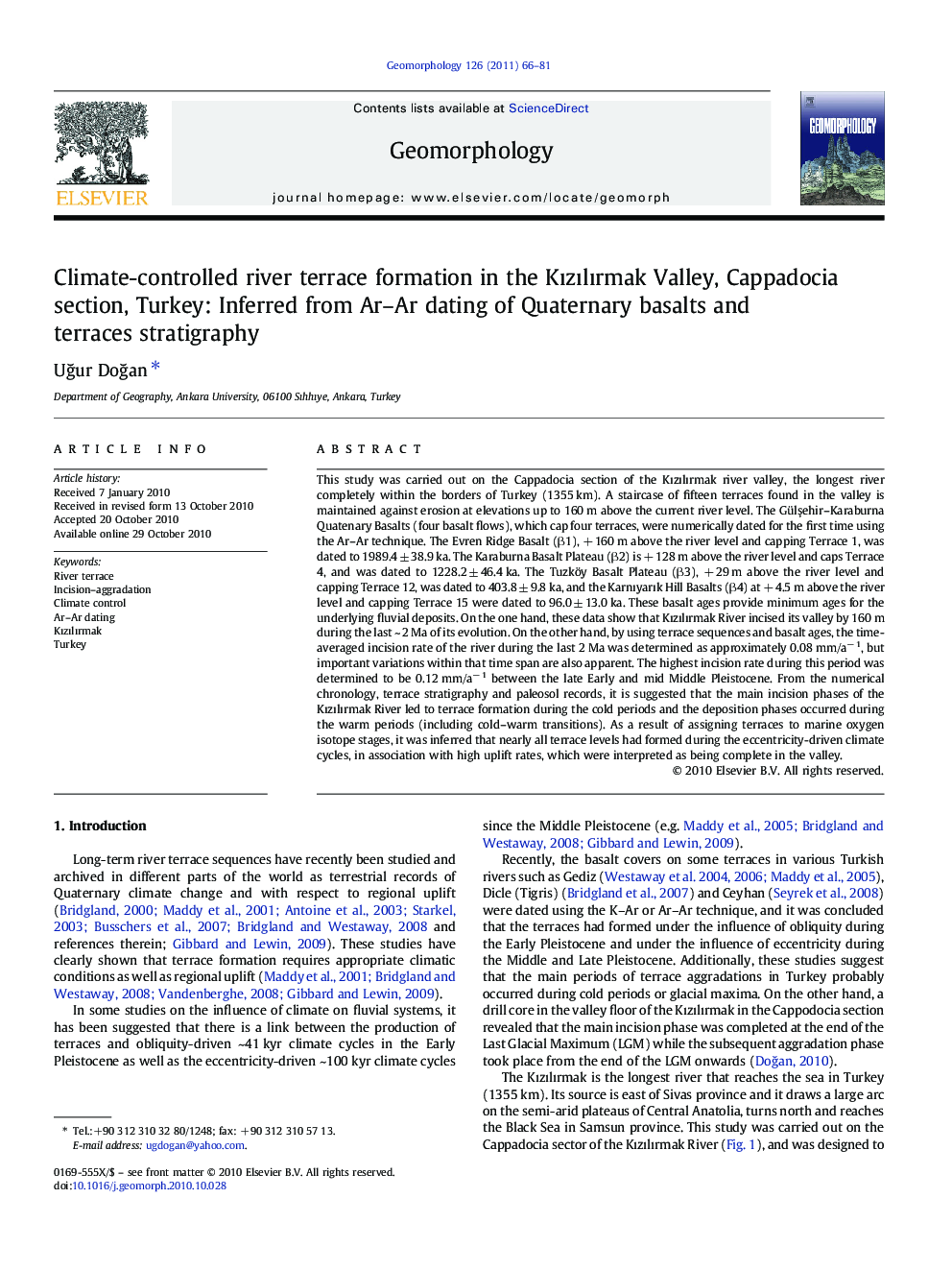| Article ID | Journal | Published Year | Pages | File Type |
|---|---|---|---|---|
| 4685663 | Geomorphology | 2011 | 16 Pages |
This study was carried out on the Cappadocia section of the Kızılırmak river valley, the longest river completely within the borders of Turkey (1355 km). A staircase of fifteen terraces found in the valley is maintained against erosion at elevations up to 160 m above the current river level. The Gülşehir–Karaburna Quatenary Basalts (four basalt flows), which cap four terraces, were numerically dated for the first time using the Ar–Ar technique. The Evren Ridge Basalt (β1), + 160 m above the river level and capping Terrace 1, was dated to 1989.4 ± 38.9 ka. The Karaburna Basalt Plateau (β2) is + 128 m above the river level and caps Terrace 4, and was dated to 1228.2 ± 46.4 ka. The Tuzköy Basalt Plateau (β3), + 29 m above the river level and capping Terrace 12, was dated to 403.8 ± 9.8 ka, and the Karnıyarık Hill Basalts (β4) at + 4.5 m above the river level and capping Terrace 15 were dated to 96.0 ± 13.0 ka. These basalt ages provide minimum ages for the underlying fluvial deposits. On the one hand, these data show that Kızılırmak River incised its valley by 160 m during the last ~ 2 Ma of its evolution. On the other hand, by using terrace sequences and basalt ages, the time-averaged incision rate of the river during the last 2 Ma was determined as approximately 0.08 mm/a− 1, but important variations within that time span are also apparent. The highest incision rate during this period was determined to be 0.12 mm/a− 1 between the late Early and mid Middle Pleistocene. From the numerical chronology, terrace stratigraphy and paleosol records, it is suggested that the main incision phases of the Kızılırmak River led to terrace formation during the cold periods and the deposition phases occurred during the warm periods (including cold–warm transitions). As a result of assigning terraces to marine oxygen isotope stages, it was inferred that nearly all terrace levels had formed during the eccentricity-driven climate cycles, in association with high uplift rates, which were interpreted as being complete in the valley.
